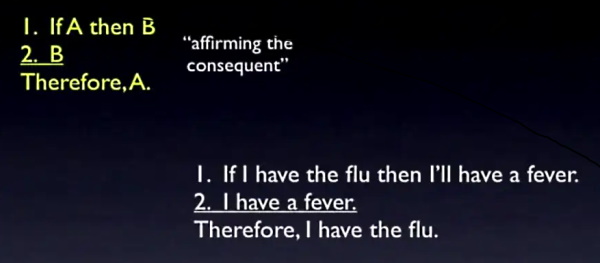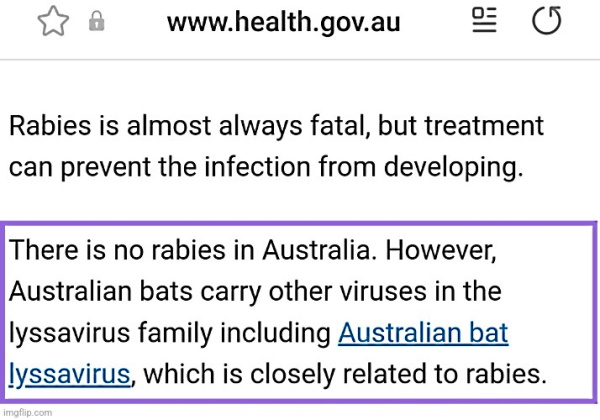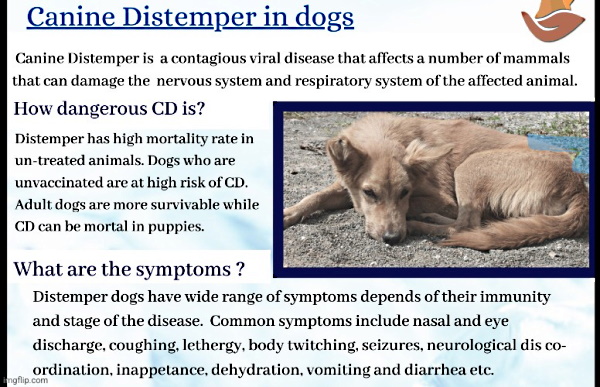Mike Stone: Blindsided by Rabies With Michael Wallach on the Skeptico Podcast
Mike Stone: Blindsided by Rabies With Michael Wallach on the Skeptico Podcast
by Mike Stone, ViroLIEgy
August 3, 2022
A few weeks ago, I was invited by Michael Wallach, the director of the amazing docu-series The Viral Delusion, to join him as a guest on the Skeptico podcast. It was an interesting experience to say the least. We were under the impression that the conversation would be focused on the gain of function/lab leak theories as well as HIV and we had prepared ourselves to discuss these topics. However, the conversation instead took a detour when the host, Alex Tsakiris, changed the focus to rabies instead, an area he felt was left unexplained by those of us stating that “viruses” do not exist. He presented us with a graph showing statistics of rabies cases declining with the use of vaccines. Unfortunately, at the time that we were interviewed, Alex was unable to provide us with a source for the information that he shared with us. Neither Michael nor I had ever seen this graph before, however it really wasn’t the issue as vaccine statistics do not prove a “viral” cause.
Unfortunately, the rabies graph became the bulk of our time on the show. Michael Wallach did an excellent job explaining the problems with the lack of evidence behind the rabies “virus” as well as the fraud of Louis Pasteur. I wanted to chime in more to help out (not that Michael needed me to) but sadly Alex was not really interested in what I had to say about the subject. You can view our conversation with Alex on the Skeptico podcast here:
As I was unable to speak much on the topic with Alex, I want to present some information here that may help to answer his questions as to why rabies cases appeared to decline as the vaccine was introduced. However, before addressing the graph, the first thing that needs to be understood is that at no time has a rabies “virus” ever been properly purified and isolated directly from the fluids of any animal nor any human and then proven pathogenic by adherence to the scientific method. In fact, as he performed his experiments in the 1870’s and 1880’s, Louis Pasteur provided no theoretical basis for the vaccination of rabies as he admitted that he had failed to isolate the microbe that was presumed responsible for the disease. He also massaged and manipulated his data in order to justify his claims as to the success of rabies vaccination. Pasteur was a fraud who was more concerned with fame and prestige rather than performing valid scientific research. I wrote about his unethical practices involved with the early rabies research as well as how the rabies vaccines actually produced the severe neurological symptoms often associated with the disease here.
Later attempts to propagate the “virus” in the 1950’s, which were claimed to be successful, were done in hamster brain and kidney cultures. Interestingly, it was noted that no cytopathogenic changes, the very criteria used by virologists to claim ‘viruses” are present within these cultures, occured whatsoever.

Even by the CPE standards used by virologists as a measure for the successful isolation of a “virus,” they had failed to “isolate” rabies in their cultured samples. As no rabies “virus” has ever been scientifically proven to cause the disease, there is no basis to claim that the symptoms associated with rabies are caused by a “virus.” Still, in spite of being given this information, Alex continued to focus on his graph as if the effect credited to the vaccine was somehow proof of a “viral” cause. However, one can not look to an effect in order to claim a cause. This is a logical fallacy known as affirming the consequent. It is often stated like this:

In other words, if rabies is caused by a “virus,” the vaccine will lower cases. The cases declined with vaccine use, therefore rabies is caused by a “virus.” Obviously, this is not a logical statement as there are many variables and factors unaccounted for that could lead to the appearance of a vaccine having a positive effect on rabies cases. It should also not need to be stated that just because a vaccine appeared to work does not mean that the cause of rabies was a “virus.” A rabies “virus” must be scientifically proven to exist first in order to be tested for as the cause of the symptoms of disease associated with it. This has never been done.
We therefore must ask ourselves a very important question:
- Did the rabies vaccines really cause rabies cases to fall or are there other potential reasons for the apparent decline?
Let’s try to answer this by looking at the graph Alex provided on the air. Fortunately, I was able to find the source for the image. It came from the CDC’s own data from the Morbidity and Mortality Weekly Report in July 2019. The study was titled Vital Signs: Trends in Human Rabies Deaths and Exposures — United States, 1938–2018.

What we can find out is that rabies cases were exceedingly rare over the entire graph period, with only 588 cases of human rabies reported in the United States from 1938 to 2018. In fact, there was a sharp decline in rabies cases a few years prior to the mass vaccination of dogs in 1947, which is often the case when looking at the decline in disease before the introduction of vaccination. Of course, the vaccine is given the credit even though the cases were well in decline beforehand.
So what could have caused this sharp drop before and after vaccine introduction? If you have looked into the decrease in diseases claimed to have been caused by other “viruses,” it is easy to spot a certain trend. Often times, the symptoms of disease claimed to be declining due to vaccination are reclassified either as a new or related disease caused by a new or related “virus.” Smallpox was rebranded as chicken and/or monkeypox, polio became acute flaccid myelitis, syphilis morphed into AIDS, influenza transformed into “Covid,” etc. etc. etc. This trend of rebranding and relabelling the same symptoms of disease as either new diseases or similar ones can easily be seen with rabies and the rabies-related “lyssaviruses.” While the rabies “virus” is considered a “lyssavirus,” there are numerous other “viruses” under this same heading that are considered “rabies-like viruses” that do not cause rabies per se but instead “rabies-like” disease:
Rabies and Rabies-Related Lyssaviruses
“Closely related lyssaviruses circulate among bats in the Eastern Hemisphere, and can cause an illness identical to rabies. Rabies vaccines and post-exposure prophylaxis can provide some protection against some of these viruses, but not others. Rabies-related lyssaviruses can be found even in countries classified as rabies-free.”
“Information about rabies-related lyssaviruses is currently limited to a small number of case reports and a few reports of experimental inoculation; however, the illness
appears indistinguishable from rabies. Bats may either have mild or no clinical signs and survive the infection, or develop severe neurological signs and die.”
https://www.cfsph.iastate.edu/Factsheets/pdfs/rabies.pdf
According to the CDC, these rabies-related “viruses” include:
- Lagos bat
- Mokola “virus”
- Duvenhage “virus”
- European bat “virus” 1 & 2
- Australian bat “virus”
This is a nice convenient scapegoat which allows a country to declare itself rabies-free even though the same symptoms of disease still persist. For example, in Austraila you will find disclaimers such as this:

According to Australia, they are rabies-free even though the same symptoms of disease persist within the country. These cases are blamed on the Australian bat “virus” which is claimed to cause a “rabies-like” disease. Quite convenient, right? However, what if the classification system for these “lyssaviruses” were to change? Would a country that is considered rabies-free lose its illustrious status?
Lyssaviruses and rabies: current conundrums, concerns, contradictions and controversies
“With increasing ICTV debate toward unification of virus taxonomy based on genetic distances, in the near future there may be a re-classification attempt, in which all phylogroup I viruses are segregated into one species (for example, Rabies lyssavirus?) and all phylogroup II viruses are segregated into another. Of course, such re-classification would miss important characteristics used for species demarcation at present and may have potential socio-economic or bio-political consequences for certain areas. For example, some places where RABV is not thought to circulate, such as in Australia or Western Europe (but where other lyssaviruses are present among bats), might lose their self-defined “rabies-free” status, on the basis of viral taxonomic re-organization, creating greater confusion, with potential public health, veterinary, or economic repercussions, if suddenly recast into the same disease status as Africa, Asia and the New World. Arguably, the term “rabies” appears to garner greater weight and seriousness than the less familiar designation “bat lyssavirus”.
https://www.ncbi.nlm.nih.gov/pmc/articles/PMC5325067/
The loose definitions allow countries such as Austrailia to claim rabies-free status even though the disease still persists there. If the definition and/or classification changes, so to will their status. This is similar to how America is allowed to claim it has been polio-free since 1979 while there are cases every year of acute flaccid myelitis and other polio-like diseases which present with the same sets of symptoms. We could easily relabel those polio-like diseases as polio and lose the polio-free designation.
While the same set of rabies symptoms can be blamed on the closely related “lyssaviruses,” they can also be blamed on unrelated “viruses” and conditions that are said to be caused by different “viruses,” bacteria, genetic abnormalities, and even poisons.. For instance, animals can be diagnosed with distemper instead of rabies. These two diseases have often been confused for one another as the symptoms are indistinguishable:
Raccoons – distemper and rabies
“Canine distemper in raccoons starts slowly, with respiratory infections then they develop pneumonia. In the final stage of the disease, the raccoon may begin to wander aimlessly in a circle with bizarre behaviour as a result of brain damage. Many of these symptoms are similar to rabies – which can only be determined by laboratory testing.”
https://www.delta-optimist.com/archive/blog-raccoons-distemper-and-rabies-3068619

“CDV is a highly contagious paramyxovirus that affects dogs and wildlife including raccoons, skunks, grey foxes, and ferrets. This virus is closely related to the human measles virus, and can lead to respiratory, gastrointestinal (GI), and central nervous system (CNS) problems. CDV is often confused with other infectious diseases, including rabies, because the organ systems affected and clinical signs are similar.”
There are many other diseases such as encephalitis and different neurological disorders which are also said to mimic rabies in animals. Even poisoning is stated to mimic the severe stages of the disease:
Diseases that can look like Rabies
“Encephalitis is one condition that can look somewhat like the early stages of rabies. In this condition, with is immune based in most dog breeds of dogs, the dog’s own immune system begins to attack the brain. The result is a dog that may be confused, appear to stagger and bump into things, or even a dog that seems very disoriented and lost even in familiar settings. The dog may also have temperament changes and may snap at owners or become very agitated when they have previously been calm and friendly.”
“Canine distemper is another disease that may be mistaken for rabies since the symptoms are so close to being the same. Even wild animals such as raccoons, foxes and coyotes can have distemper that can even further confuse the issue. Since it is still a highly contagious disease it is essential to get your dog to the vet if he or she has had any contact with wild animals or other dogs that seem to be disoriented, have a discharge from the eyes or nose, paralysis and stumbling types of movements. Typically the wild animal will be non-threatened by human presence, which in itself is a sign of abnormal behavior. It is important to realize that distemper, unlike rabies, cannot be passed from an animal to a human. However it is important to stay away from any animal that appears to have any symptoms similar to rabies or distemper.”
“Other neurological conditions, some which are fatal and contagious and some that are strictly a result of a genetic or inherited condition can mimic the early signs of rabies. In rare cases animals that are poisoned and those with neurological conditions can exhibit the same signs as advanced stages of rabies including paralysis, drooling, sensitively to light and sound, dramatic changes in behavior and even refusal to eat or drink.”
https://terrificpets.com/articles/102287565.asp
As can be seen from the above three sources, canine distemper and other diseases such as encephalitis can be confused with rabies due to the identical nature of the symptoms. These diseases still persist within dogs and other animals while rabies, or at least “dog rabies,” has been said to have been eliminated from the US and other countries. In other words, the rabies label is no longer applied upon diagnosis even though the same symptoms of disease circulate in animals within the country.
This merry-go-round among the same symptoms of disease does not stop with animals either. There are many conditions in humans that also mimic rabies. These diseases are outlined in this final source:
Beware: there are other diseases that can mimic rabies:
- Diseases that can mimic encephalitic rabies:
- viral encephalitis (i.e. Japanese, eastern equine, West Nile)
- delirium tremens
- acute substance intoxication (i.e. cocaine, amphetamines)
- acute psychoses
- bacterial meningitis
- cerebral malaria
- post-rabies vaccination encephalopathy
- bite of an elapid snake (i.e., cobra)
- tetanus
- Diseases that can mimic paralytic rabies:
- polio
- Guillain–Barré syndrome
- botulism
- diphtheria
- bite of an elapid snake (i.e., cobra)
Rabies [Infectious Disease Advisor]
In Summary:
- Louis Pasteur admitted to not isolating the agent presumed to cause rabies
- In the 1950’s, attempts to isolate the “virus” in cultures of hamster brains and kidneys were deemed successful despite the lack of observing any cytopathogenic effect (CPE)
- Many “viruses” that are said to be eliminated or controlled through vaccination were rebranded and relabelled as either similar diseases caused by related “viruses” or new diseases caused by new “viruses”
- Regarding rabies, closely related “lyssaviruses” circulate among bats in the Eastern Hemisphere and can cause an illness identical to rabies
- Rabies-related “lyssaviruses” can be found even in countries classified as rabies-free
- The illness associated with these rabies-related “lyssaviruses” appears indistinguishable from rabies
- Some places where rabies is not thought to circulate, such as in Australia or Western Europe (but where other “lyssaviruses” are present among bats), might lose their self-defined “rabies-free” status, on the basis of “viral” taxonomic re-organization,
- This would create greater confusion, with potential public health, veterinary, or economic repercussions, if they were suddenly recast into the same disease status as Africa, Asia and the New World
- The term “rabies” appears to garner greater weight and seriousness than the less familiar designation “bat lyssavirus”
- Canine distemper is a rabies-like illness in animals
- In raccoons, it starts slowly, with respiratory infections then they develop pneumonia
- In the final stage of the disease, the raccoon may begin to wander aimlessly in a circle with bizarre behaviour as a result of brain damage
- Many of these symptoms are similar to rabies – which can only be determined by laboratory testing
- Canine distemper is often confused with other infectious diseases, including rabies, because the organ systems affected and clinical signs are similar
- It is mistaken for rabies since the symptoms are so close to being the same
- Even wild animals such as raccoons, foxes and coyotes can have distemper that can even further confuse the issue
- Encephalitis is another condition that can look somewhat like the early stages of rabies
- The result of this brain swelling is a dog that may be confused, appear to stagger and bump into things, or even seems very disoriented and lost even in familiar settings
- Other neurological conditions, some which are fatal and contagious and some that are strictly a result of a genetic or inherited condition can mimic the early signs of rabies
- In rare cases animals that are poisoned and those with neurological conditions can exhibit the same signs as advanced stages of rabies including paralysis, drooling, sensitively to light and sound, dramatic changes in behavior and even refusal to eat or drink
- In humans, there are many diseases which mimic rabies:
- Diseases that can mimic encephalitic rabies:
- “viral” encephalitis (i.e. Japanese, eastern equine, West Nile)
- delirium tremens
- acute substance intoxication (i.e. cocaine, amphetamines)
- acute psychoses
- bacterial meningitis
- cerebral malaria
- post-rabies vaccination encephalopathy
- bite of an elapid snake (i.e., cobra)
- tetanus
- Diseases that can mimic paralytic rabies:
- polio
- Guillain–Barré syndrome
- botulism
- diphtheria
- bite of an elapid snake (i.e., cobra)
- Diseases that can mimic encephalitic rabies:
For some reason, people seem to think rabies is a “gotcha” for those of us claiming that “viruses” do not exist. This disease is thrown out as proof that vaccines are effective and that because of this, the “virus” must therefore exist. However, a big problem for anyone championing rabies as proof for the existence of “viruses” continues to be the lack of any purified and isolated “virus” particles coming directly from the fluids of a rabid host. Louis Pasteur openly admitted to failing to meet this burden of proof even though he subjected animals and humans to experimental injections. Attempts by researchers in the 1950’s to propagate the “virus” in tissue and cell cultures did not produce the characteristic cytopathogenic effect said to be necessary in order to determine if a “virus” is present in a culture. Thus, there is no scientific proof for the existence of the rabies “virus,” even by virology’s own standards.
As the rabies “virus” can not be shown to exist, any data relating to a decrease in cases due to a vaccine which is then used as proof for the existence of a rabies “virus” is entirely irrelevant. There are many reasons to doubt case statistics as these can be easily manipulated and massaged in order to create whatever narrative is desired. It can be seen that the same symptoms associated with rabies still exist today as there are many other diseases either said to be caused by rabies-related “viruses” or completely unrelated “viruses” that share the exact same symptoms associated with rabies. These diseases are more commonly diagnosed in areas where rabies is said not to be circulating. It is very apparent that virology loves to rebrand and relabel the same symptoms of disease as multiple “new and different” diseases in order to create the perception that the treatments work. This is why places like Austrailia get to claim to be “rabies-free” even though a rabies-like disease said to be caused by a rabies-like “virus” still exists there. This lowers the cases as the older diseases are claimed to be either eradicated and/or under control due to “successful” vaccination campaigns and thus they are not looked for as a diagnosis. There is no way that these statistics can be trusted when the definitions and labels of what is or is not rabies seemingly changes at will.
In any case, the rabies statistics are a moot point. Until someone can provide proof of the purification and isolation of the particles assumed to be rabies directly from the fluids of a rabid host which were proven pathogenic in a natural way, these case numbers are utterly meaningless. The conversation with Alex on the Skeptico podcast should have never even reached vaccination statistics unless he provided a paper showing the evidence for the existence of a rabies “virus” first. Unfortunately, while Michael did an admirable job defending our position, we were not prepared for the graph and did not get the chance to look over the data and present our counter-argument. Hopefully we can get the chance to go on again and discuss the issue in further detail in the future. However, if not, this response will have to suffice.
cover image credit: creozavr / pixabay
